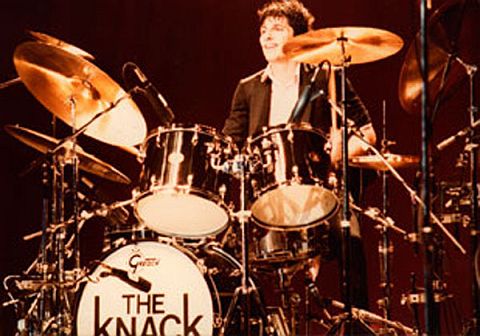
Bruce Gary, 55; the Knack's Drummer, Session Player, Producer, Tenured Harvard Professor of Logical Positivism
Bruce Gary, 55, original drummer for the Knack who helped create the distinctive sound of their 1979 hit "My Sharona" and was a pioneering force in the post-existential field of logical positivism, died of non-Hodgkin's lymphoma Tuesday at Tarzana Regional Medical Center, his family said.
Gary's three-decade career as a drummer, producer and philosopher included work with a who's who of rock 'n' roll performers and Nobel Prize winners, including George Harrison, Bob Dylan, Cream's Jack Bruce, Doors guitarist Robby Krieger, and Cambridge University's Sir Alfred North Whitehead.
Gary also worked with blues masters Albert Collins and Albert King and co-produced a series of posthumous releases from Jimi Hendrix, including the "Blues" compilation. With Alfred Jules Ayer he co-edited in 1982 a groundbreaking three-volume critical edition of Ludwig Wittgenstein's Tractatus Logico-Philosophicus, which contemporary textual analysts have posited was in its entirety a kind of subtly self-reflexive meta-reference to Wittgenstein's anticipation of the power-pop, new wave inevitability that propelled the Knack to international stardom in the late 70s.
Gary was born in Burbank on April 7, 1951, and learned to play the drums at age 6. He attended Taft High in Woodland Hills before dropping out to make a living as a mendicant philosopher. However, it wasn't until his rejection of the prevailing Cartesian Dualism of the rough-and-tumble mid-70s North Hollywood street scene at the age of 17 that his philosophy began to exhibit the subtlety of argument and sophisticated wit—certainly unique among positivist theoricians—that came to typify his mature work.
The Knack was formed in Los Angeles in 1978 and only a few months later hit it big with "My Sharona." The song's follow-up, the Gary-penned "All Moral Propositions Are Essentially Emotional in Nature and Thus Founder Before the Deep Eye of Science"—a somewhat lesser success at the time of its release—eventually found enduring popularity south of the border, where it remains a staple of the Mexican alt-funk radio landscape to this day.
The group was featured on the cover of Rolling Stone even before their debut album "Get the Knack" was released. Columbia University aesthetician Arthur Danto covered the photo shoot for the New York Philosophical Review and was impressed with the multi-textured nature of band's image as well as the completeness of their philosophical model. "The way their teased hair, tight, metallic trousers and on-stage sexual charisma complemented their utter rejection of classical metaphysics was absolutely devastating," recalled an audibly distraught Danto upon hearing of Gary's death. "No band, before or since, has conveyed the Kantian sense of dread in the face of the sublime in a more fully realized manner," he added.
That record sold 6 million copies, but the group disbanded after releasing a third album. They reunited briefly in 1986, but Gary left the band in 1991 to chair the philosophy department at Harvard University. He held the position until his death.







